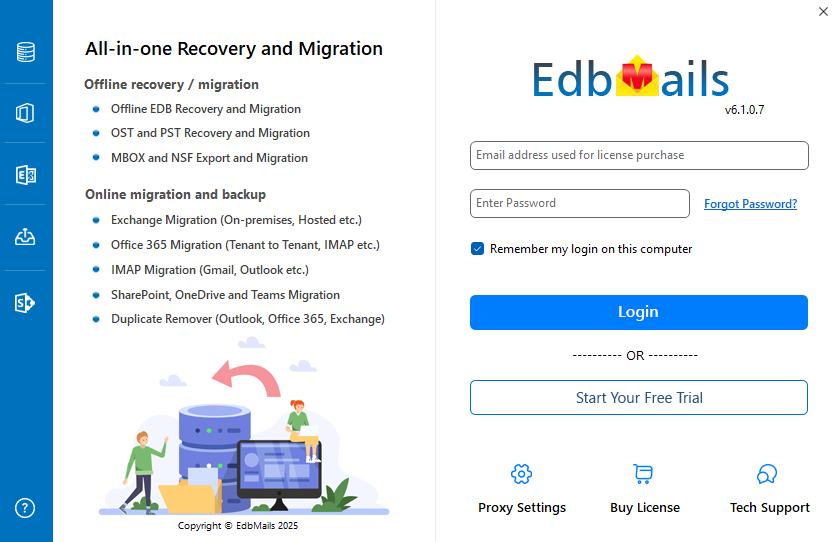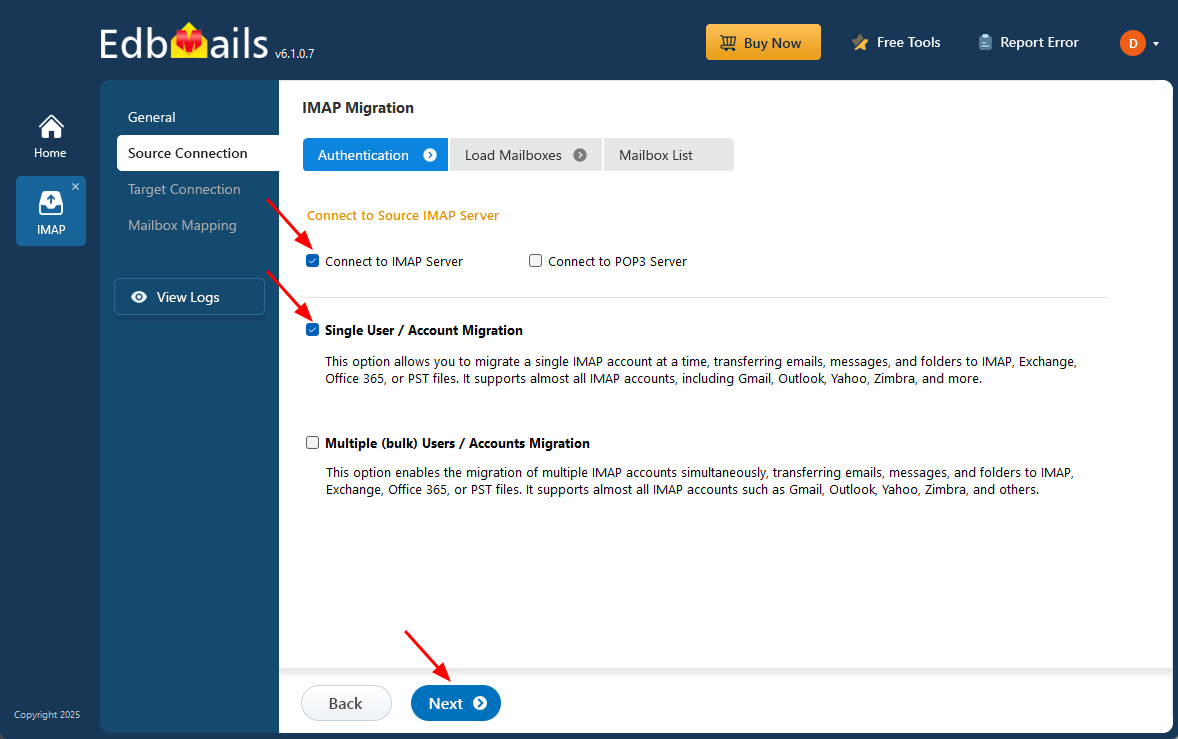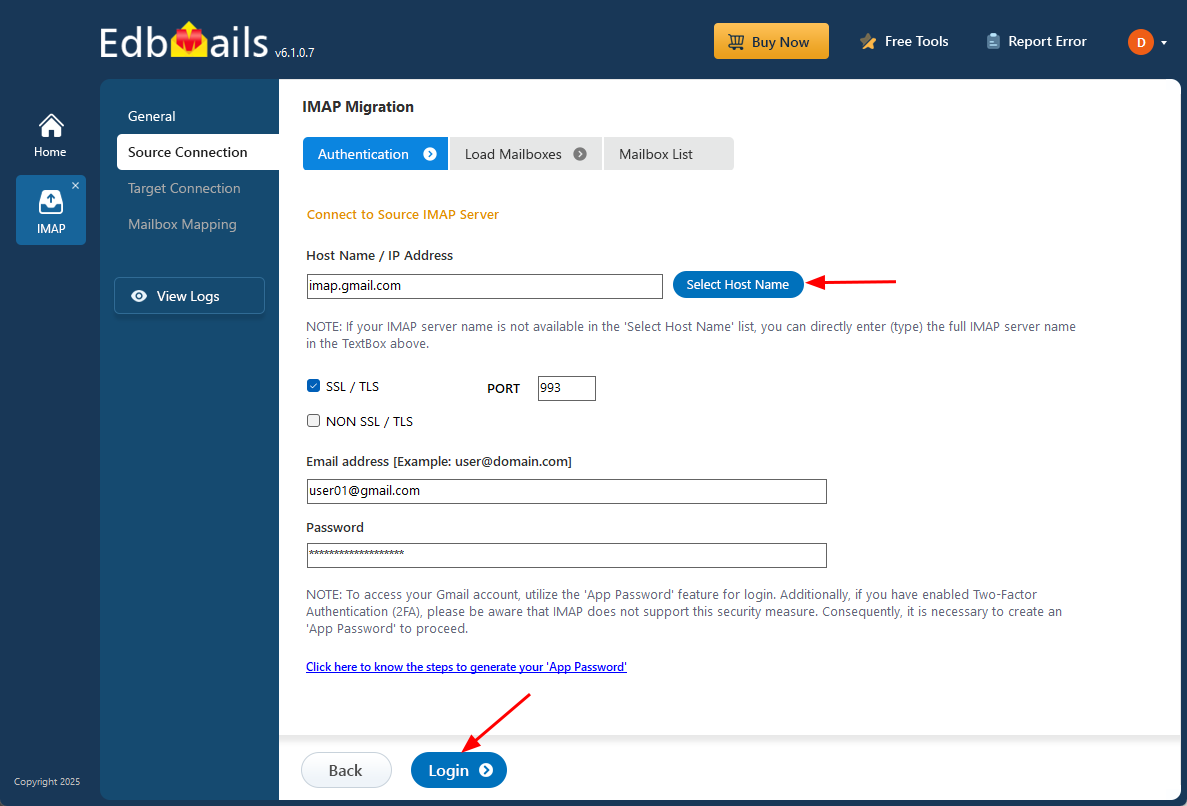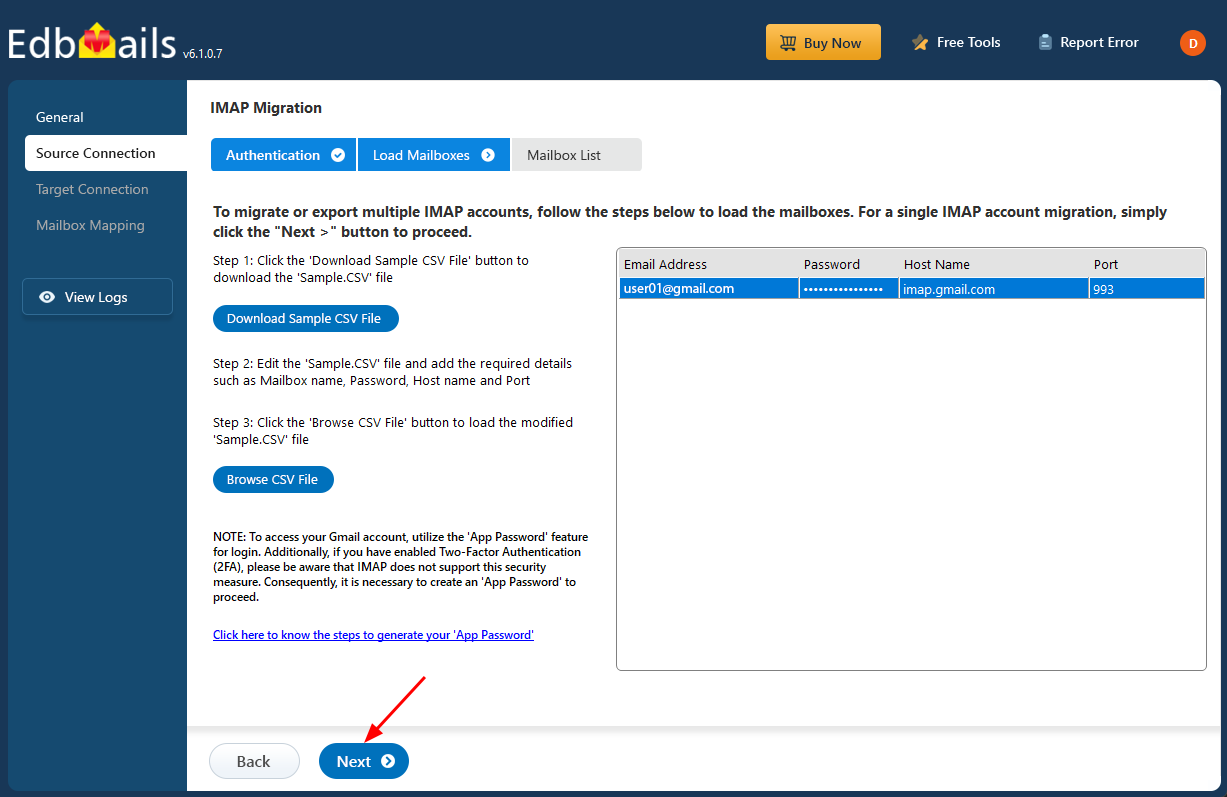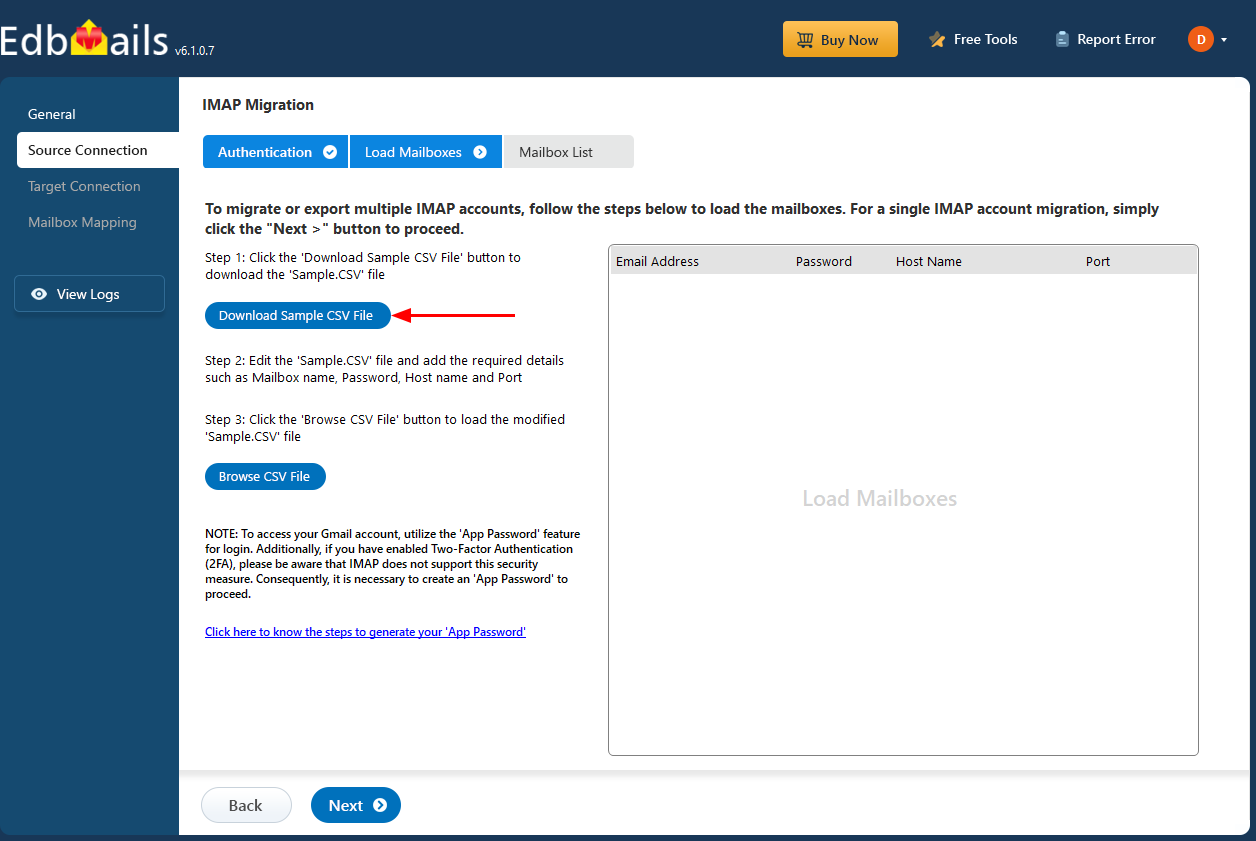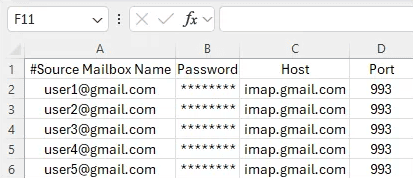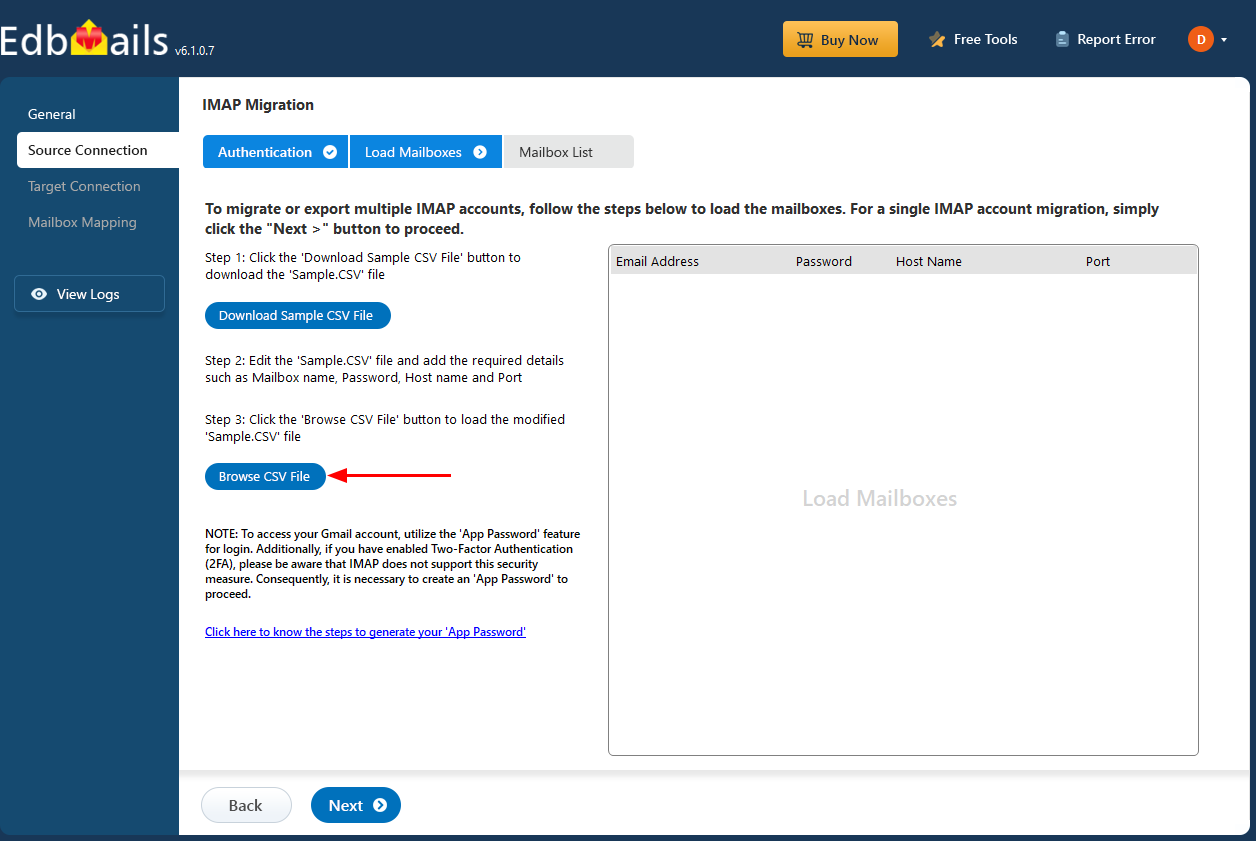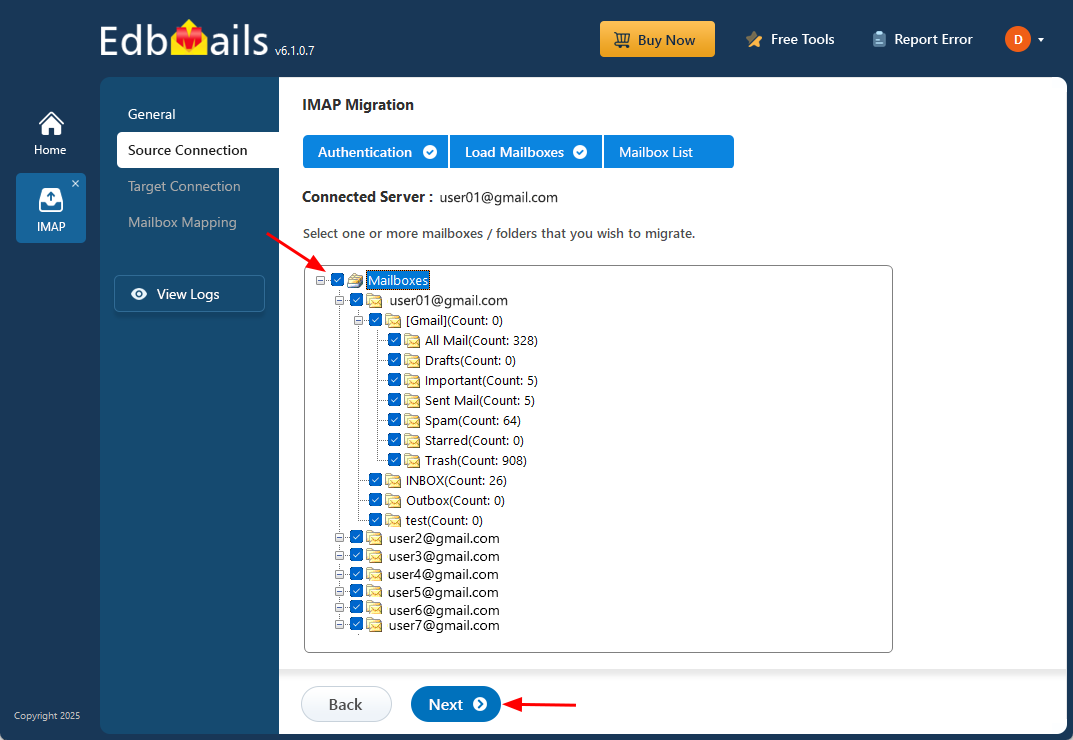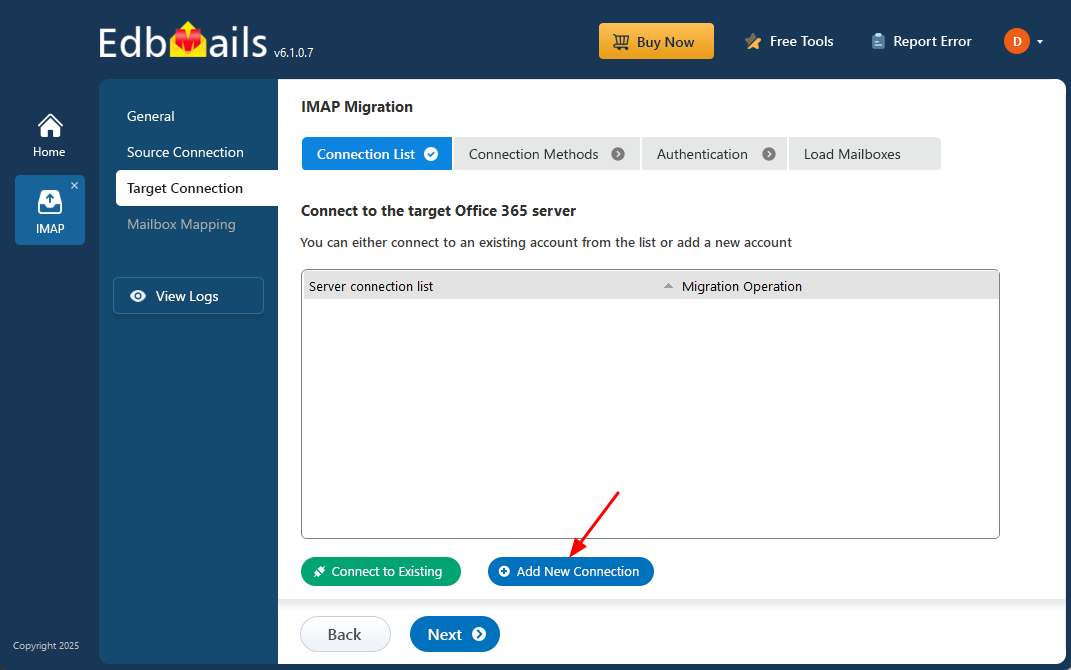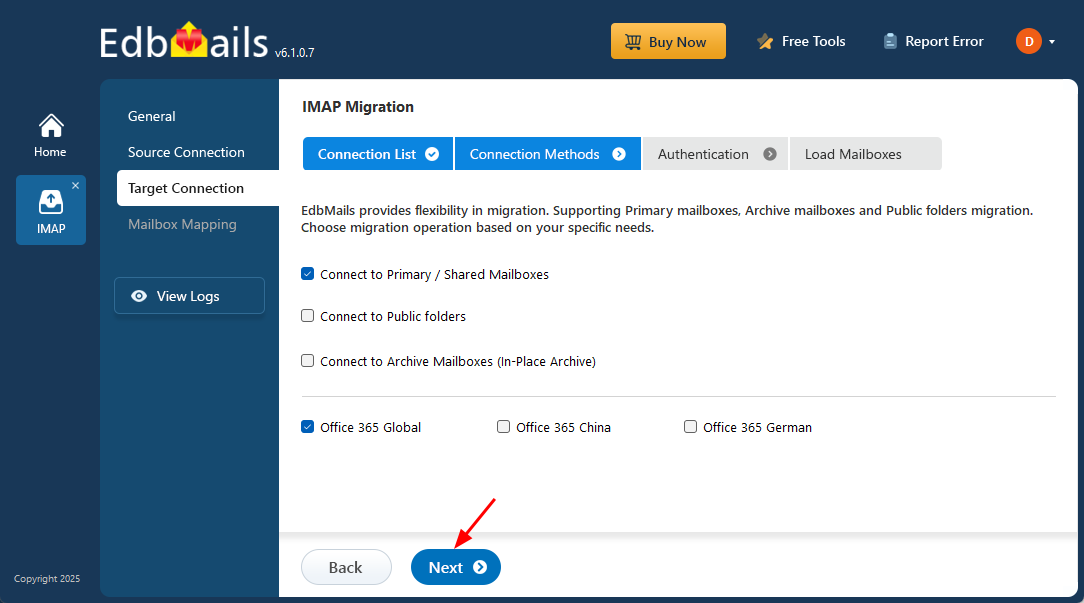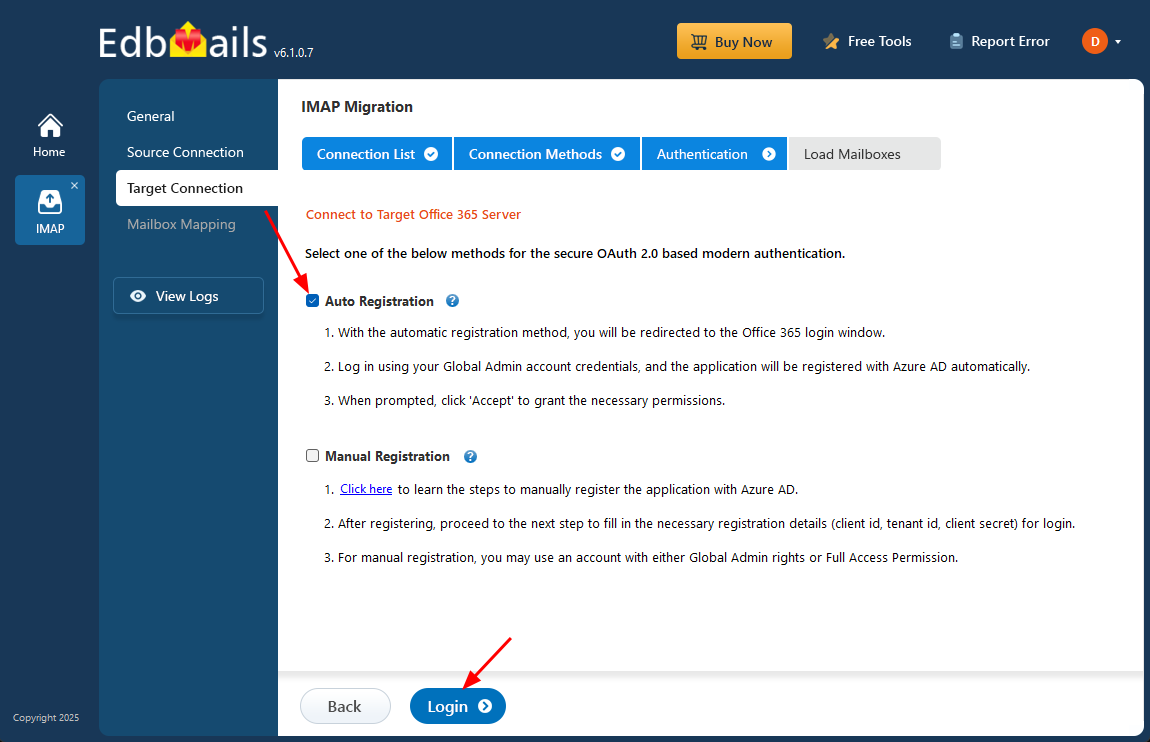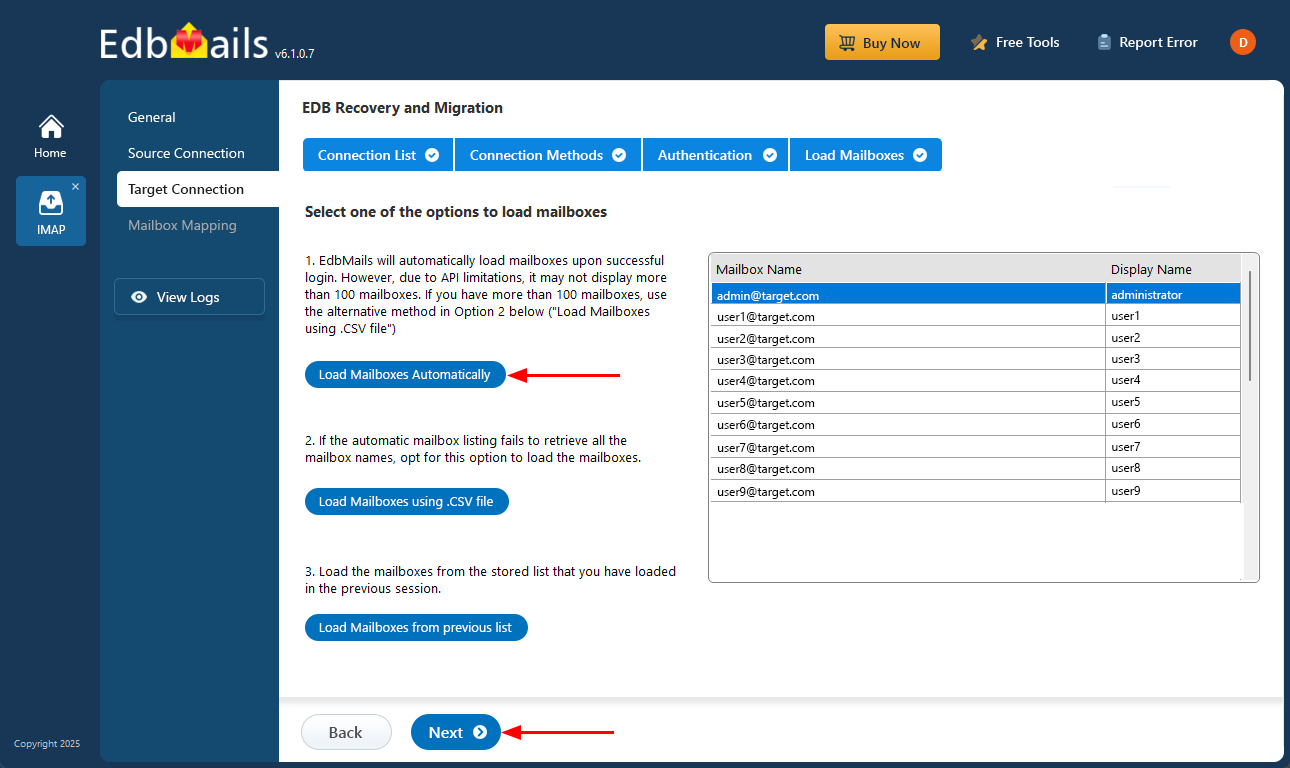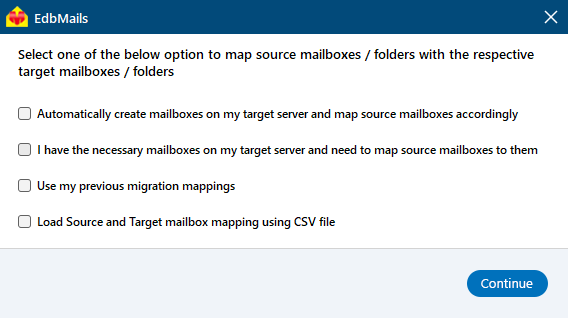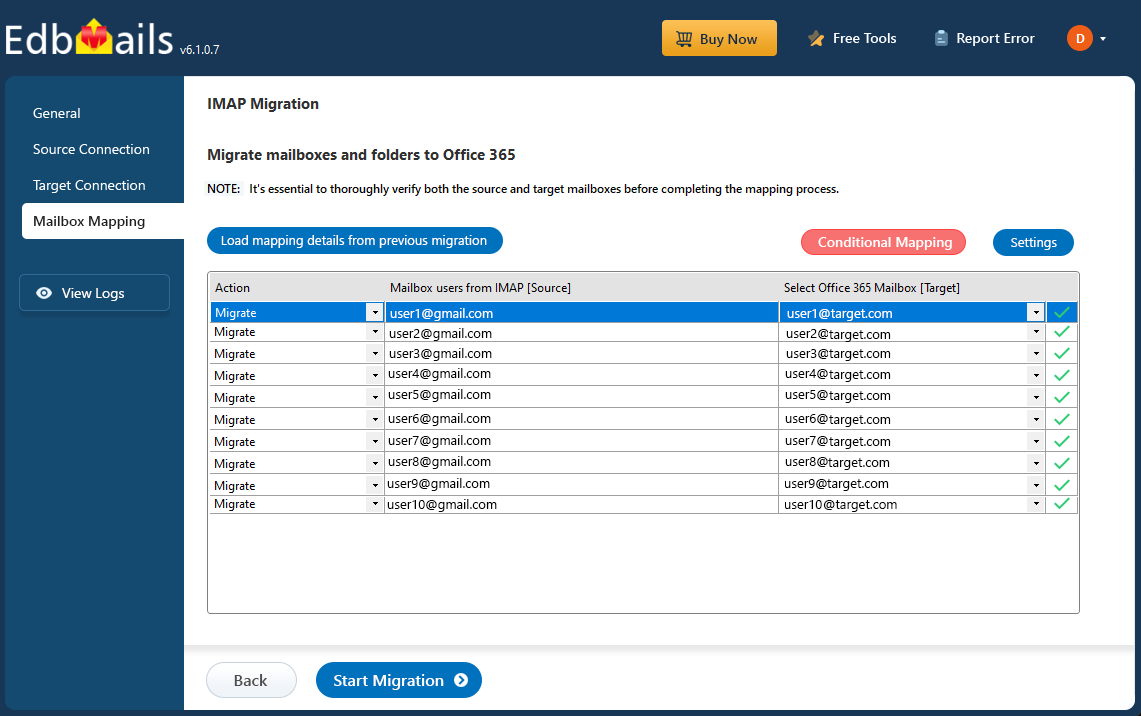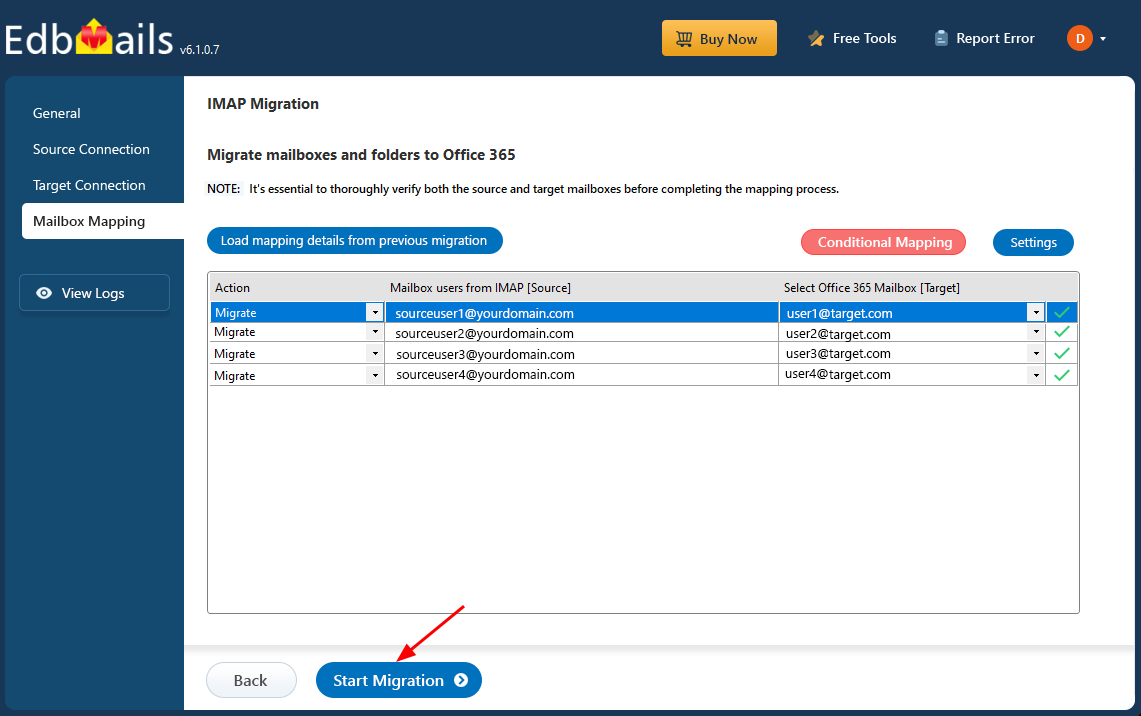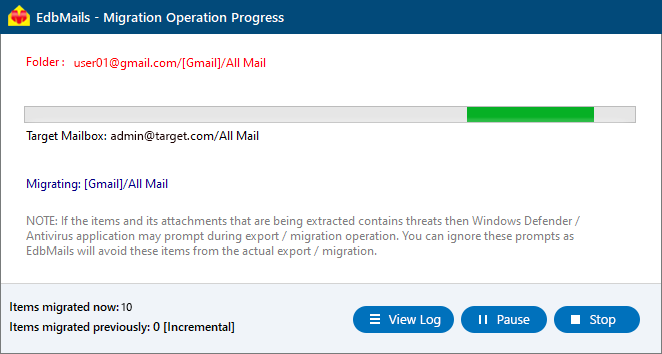IMAP to Office 365 migration
Switching from IMAP to Office 365 brings your team a powerful, all-in-one platform that outshines basic email systems. Office 365 syncs emails, calendars, contacts, tasks, and notes effortlessly—features IMAP can’t fully deliver. With 50 GB of mailbox storage per user (upgradable to 100 GB with the E5 plan), plus tools like Word, Excel, Teams, SharePoint, and OneDrive, it’s built for business scalability and collaboration. However, migrating from IMAP servers (like Gmail or Zimbra) to Office 365 isn’t without hurdles: data mapping errors, compatibility quirks, and downtime risks can trip you up. A solid plan and the right tool can make all the difference.
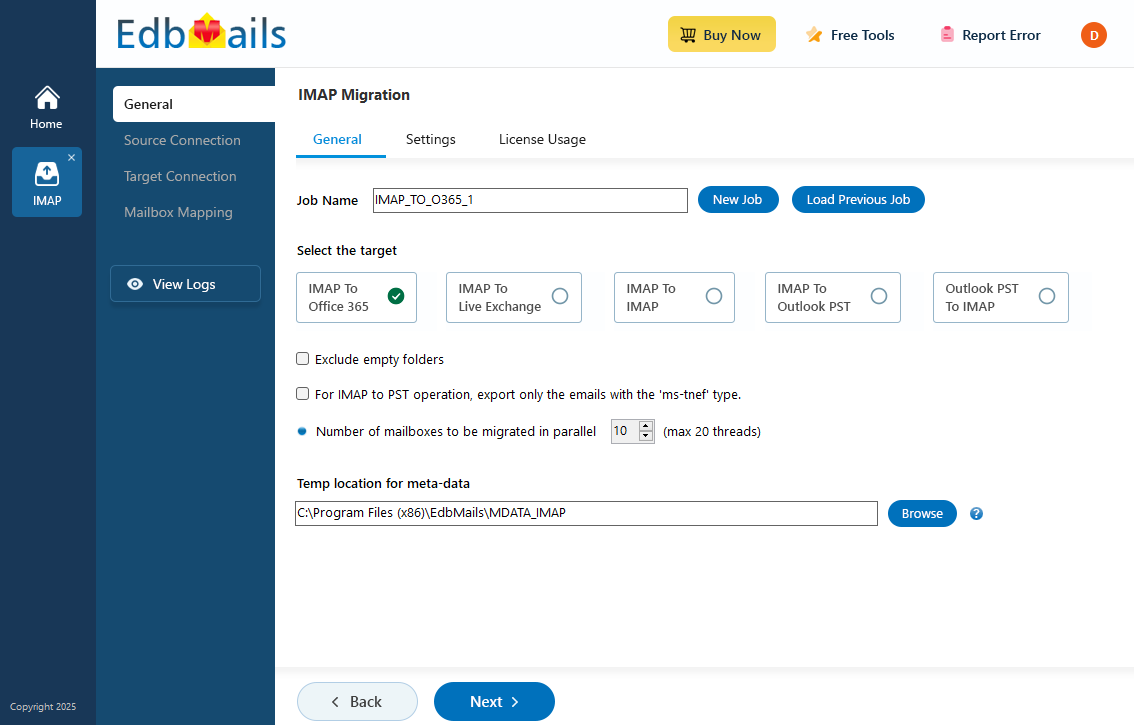
EdbMails IMAP Migration software tackles these challenges head-on. It offers concurrent migrations to speed things up, zero-downtime transfers to keep your business running, and a user-friendly interface that simplifies the process for IT teams. Whether you’re moving a single mailbox or hundreds, EdbMails ensures a secure, efficient transition to Office 365.
IMAP to Office 365 Migration plan
Planning is one of the most important steps before you begin your IMAP to Office 365 migration. Here is a brief checklist of points to consider before you migrate.- Remove unused mailboxes, mail items and duplicate files from the source.
- Make an inventory of items before you make the move. These should include but are not limited to the following items.
- User accounts, email addresses and login credentials
- The source and target details, browser and operating systems used
- Network settings, DNS configurations, MX records, firewall settings
- Outlook settings and version you are using in your organization.
- Licensing plans on your current source server
- Active Directory configuration and other dependencies associated with it.
- List of data and permissions from the source server that you want to transfer.
- Determine the size of the data and number of mailboxes you want to migrate.
- Decide if you want to migrate everything at once (cutover migration) or plan to migrate your data in stages (staged migration).
- Decide if you plan to migrate to Office 365 Public folders, In-Place Archive, and Shared mailboxes along with the primary mailboxes.
- Based on the preceding factors, estimate the approximate time that may take for the migration.
- Create appropriate user mailboxes on Office 365 and assign licenses to them.
- Ensure you have enough network capacity and bandwidth to migrate.
- Consider the throttling and message size limits on Office 365.
- Communicate the migration plan and changes to your end users and stakeholders.
- Perform a test migration before you start the actual one.
- Start the actual migration, verify the endpoints and update the MX records.
- Check for correct mail flow and configure Outlook for all the users.
- Plan for decommissioning unused apps and their settings post migration
IMAP migration to Office 365 prerequisites
On source IMAP server:- Ready with your IMAP server hostname, port number, email address, and password.
- To migrate multiple users, download the sample CSV file from the EdbMails application and update the details such as IMAP server hostname, port number, email address, and password for each user's mailbox you want to migrate.
- If you are connecting to Gmail, create an app password and use it instead of your regular password.
See how to find your IMAP server host name.
On Office 365 server:- Prepare your target Office 365 tenant. See tenant roadmap for Microsoft 365.
- Assign the Organization Management role group in Exchange online to the admin user.This is an elevated role required to migrate Public folders.
- Purchase a suitable Office 365 licensing plan. You can also sign up for a 30 day free trial and decide to go with a suitable one later. Compare Office 365 business plans and Compare Office 365 enterprise plans
- Before migrating from IMAP server to Office 365, ensure that you create mailboxes for your user. You can choose EdbMails to automatically create mailboxes on target servers. However, if you want to create the mailboxes manually, refer to the links below
- If you plan to migrate to public folders and shared mailboxes on Office 365, ensure that you create and configure them on the target server.
- Ensure that you have a global admin account with a mailbox for Auto Registration of EdbMails application on your Entra ID (Azure Active Directory). However, you can use either a global admin account or any user account with full access rights in the Manual Registration method.
- If you have a custom email domain to which you want to receive emails after the migration, you must add and verify the domain on Office 365.
Steps to add a custom domain to Office 365 and steps to add DNS records to connect your domain.
- Ensure that you meet the network and bandwidth requirements for the migration. See network and migration planning, performance factors and best practices for Office 365 migration.
- Configure Office 365 to send and receive large messages.
Follow the steps to increase the message size on Office 365 to 150MB. See message size limits on Office 365 for more information.
IMAP migration to Office 365 step by step using EdbMails
Step 1: Download and install EdbMails IMAP migration software
- Download and install EdbMails on any Windows computer.
- Follow the instructions that appear to complete the installation.
See EdbMails system requirements for Office 365 migration
- Launch the application and click the 'Login' button by entering the email address and password or click the 'Start Your Free Trial' button.
- Select the option ‘IMAP (Gmail, Outlook & more) Migration’
- Select ‘IMAP to Office 365 Migration’.
- Use the default job name or click 'New Job' to modify the job name and continue
Step 2: Connect to source IMAP server
- To connect a single user account, select ‘Single User / Account Migration’ Then, choose the required protocol, such as ‘Connect to IMAP Server’ or ‘Connect to POP3 Server’ and click ‘Next’ to proceed.
- For single-user login, select the appropriate IMAP host name from the list or enter it manually. Then, provide the email address and password. To connect to a Gmail account, ensure you create an app password and use it as the password.
- Click the ‘Login’ button.
- Once the mailbox is loaded, click ‘Next’ to proceed.
- For migrating multiple mailboxes, select ‘Multiple (Bulk) Users/Accounts Migration and click ‘Next’.
- Click ‘Download the Sample CSV File’
- Modify the CSV file with the required details such as email address, password, host name and port number in the CSV file and Save the changes.
- Close the CSV file, click the 'Browse CSV File' button , select the modified CSV file .
- Verify the mailboxes, and click 'Next'.
Refer to the EdbMails detailed steps on connecting to single and multiple users during IMAP migration.
Step 3: Select source IMAP server mailboxes
- Select the mailboxes or folders to migrate, then click ‘Next’.
Step 4: Connect to the target Office 365 server
- Click the ‘Add New Connection’ button to establish a new connection to the target Office 365. To use the previous connection, select it from the connection list and click the ‘Connect to Existing’ button to proceed.
- Select the required connection options and click the ‘Next’ button.
- Select the appropriate target connection method.
- Click the ‘Login’ button to continue.
- Authenticate on Microsoft sign-in page
- Select one of the methods to load the mailboxes. You can Select “load Mailboxes Automatically” or load the mailboxes using a CSV file and click “Next”
Step 5: Map source and target mailboxes
- Choose the required mailbox mapping option
- EdbMails automatically creates target mailboxes in Office 365 and maps source IMAP mailboxes and folders, making it easy to manage large-scale migrations.
Step 6: Start IMAP to Office 365 migration operation
- After mapping the mailboxes, click the ‘Start Migration’ button and initiate the migration process
- Click the ‘View Log’ button to access the IMAP Export operation report, which provides a detailed summary of the export process, including the total number of items exported and the count of items exported from each folder.
IMAP to Office 365 post migration tasks
- Step 1: Update DNS records (MX record) to point to Office 365
If you have not done this step previously, change the MX records to enable and receive email messages on the target Office 365 server. In addition to this setup, configure the Autodiscover record to allow Outlook to connect to the migrated mailboxes.
- Step 2: Create a new Outlook profile for users in the new domain
Remove any previous instances of the email account you may have on Outlook to avoid conflicts with Office 365. Configure and recreate the Outlook profile for each user in your domain after you complete the migration.
- Step 1: Update DNS records (MX record) to point to Office 365
IMAP to Office 365 migration troubleshooting
Refer to the migration troubleshooting guide for solutions to common errors encountered during the process. For additional information on EdbMails IMAP to Office 365 migration, consult the frequently asked questions (FAQs) section
Benefits of EdbMails for IMAP to Office 365 migration
Incremental data migration
EdbMails enables incremental migration, which allows organizations to transfer only the changes made since the last migration session. This feature significantly helps to prevent data duplication. By updating only new emails and changes, businesses can ensure a more efficient migration process, reducing the risk of data loss.Concurrent mailbox migration
With EdbMails, users can execute concurrent migrations across multiple mailboxes. This capability enhances productivity by allowing simultaneous data transfers, thereby expediting the overall IMAP to Office 365 migration timeline. Organizations can effectively manage larger volumes of data without compromising performance, ensuring that multiple users can transition to Office 365 seamlessly.Automated mailbox mapping
EdbMails offers automated mailbox mapping, simplifying the migration process by automatically associating source mailboxes with destination mailboxes in Office 365. This eliminates the need for manual mapping, reducing the potential for human error and streamlining the overall workflow. This automation is particularly beneficial for organizations with numerous users, facilitating a quicker and error-free migration.Pause or resume migration operation
EdbMails allows users to pause and resume migration operations as needed. This flexibility is crucial for organizations that may experience interruptions or need to allocate resources elsewhere during the migration process. By enabling users to control the timing of data transfers, EdbMails ensures that migration can proceed according to the organization’s operational requirements.Multilingual user support
Understanding the diverse global landscape of business communication, EdbMails provides multilingual support. This feature allows users from various linguistic backgrounds to navigate the application with ease, enhancing user experience and ensuring that language barriers do not impede the migration process.Enhanced security with MFA
EdbMails supports multi-factor authentication (MFA) for Office 365, enhancing security during the migration process. By enabling MFA, organizations can add an extra layer of protection against unauthorized access, ensuring that sensitive data remains secure throughout the transition. This is essential for maintaining compliance with data protection regulations and safeguarding business information.


